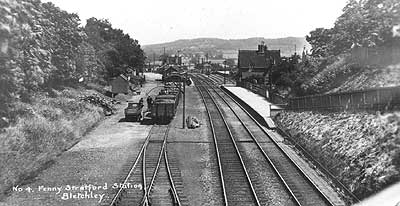In 1895 Fenny Straford Urban District Council was created and by 1898 included Simpson and Bletchley, which had continued to expand since the arrival of the railway. Council offices were built on the corner of Victoria Road with Bletchley Road (Queensway) and the now larger authority tackled long-standing problems such as street lighting and sewerage.
In 1927 the market was moved from Aylesbury Street to Oliver Road. The former village of Bletchley absorbed Warter Eaton in 1934 and began to dominate the town of Fenny Stratford. The two communities gradually merged and by the 1950's Bletchley Road (Queensway) had superseded Fenny as the local centre of commerce.
1939 once again saw the country at war and it's men of service age called to arms. Women from the Land Army took the place of absent farmworkers, evacuees arrived from London (evacuated for their own safety and billeted with local people) and with several thousands of people working at Bletchley Park, Fenny Straford and Bletchley were heavily populated.
Although things were slow to recover after the war, there was a pressing need for more housing and Bletchley Urban District Council soon embarked upon a house building programme. One result of this was the ‘trees’ estate, a London ‘overspill’ development stretching from Fenny Stratford down to Water Eaton, which effectively filled a gap and joined the two separate communities. Italian prisoners-of war were used in the building of these houses to help alleviate the shortage of manpower immediately after the war.
Fenny maintained it’s identity in the following years not as the independent community of previous times, but as a part of the constantly growing Bletchley. Up until the late 60’s and early 70’s Fenny maintained a wide variety of shops for everyday living but these gradually fell away as Bletchley’s Queensway had plenty to offer and it’s public services were being constantly improved. Now, at the start of the new millenium, Bletchley finds itself in a similar position, a part of the new city of Milton Keynes.’



